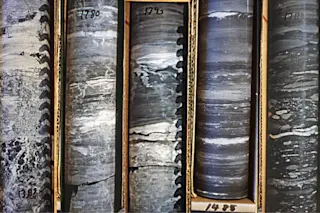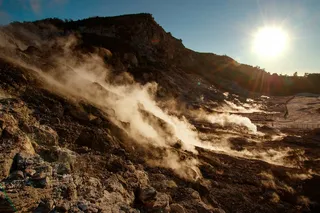Examples of the cores drilled show material laid down in shallow water on the left to deep water on the right. (Credit: Paul E. Olsen) Our solar system is a chaotic place – literally. Rewinding orbital possibilities quickly becomes too complex and too numerous for astronomers to calculate. That means we only know the orbital movements of Earth and the other planets over the past 60 million years or so. To look further back, scientists are pulling core samples from deep under Earth’s surface to examine long-ago climate change and learn about how the planets moved hundreds of millions of years ago. Scientists used two core samples drilled from deep underground to study a period in Earth’s history from about 199 to 223 million years ago. These samples provide a window into the distant past. Through this window, researchers can measure periods of warmth and cold, wet and dry, and ...
Uncovering Earth’s Orbital History Buried in Ancient Rock Deposits
Discover how core samples from deep underground reveal Earth's climatic history and astronomical influences over millions of years.
More on Discover
Stay Curious
SubscribeTo The Magazine
Save up to 40% off the cover price when you subscribe to Discover magazine.
Subscribe













